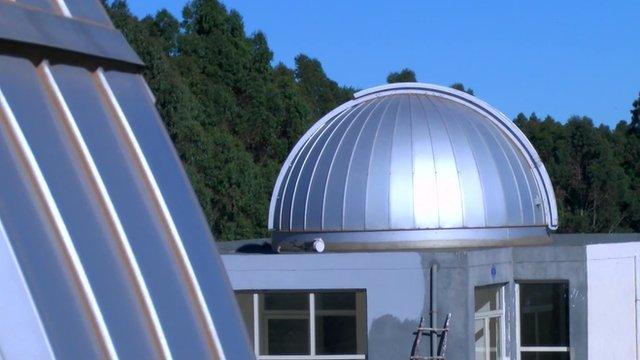Restrictive Ethiopia cuts an economic dash
- Published
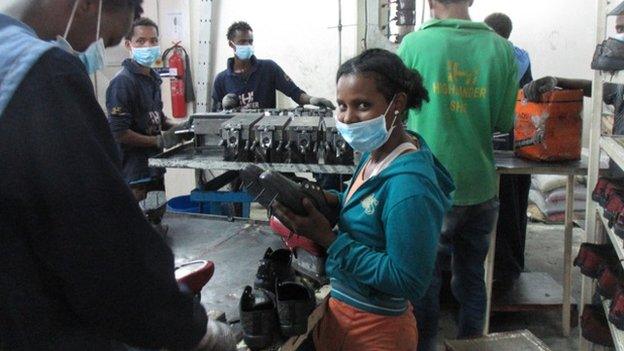
A locally managed shoe factory is giving Chinese competitors in Ethiopia a run for their money
"I retired at 24," says Samuel Alemayehu, as we look out over the vast, stinking rubbish mountain in the heart of Addis Ababa.
Birds shriek as they swoop down to collect items from the heaps of waste. Human scavengers, faces grey with dust, pick through the filth.
All this against the background of a modern cityscape, the skyline thick with construction cranes as the capital's building boom races on.
Samuel, who does not look much older than 24, tells me how his family went into political exile in the US when he was a child. How his father, who was an MP in Ethiopia, had to become a taxi driver.
But Samuel was exceptionally bright and ended up with a scholarship to study engineering at the prestigious Stanford University. He made his fortune in Silicon Valley while still a student.
"It was time to go home. To use my resources and knowledge to do something for my country," he said.
For all his talk of retirement, Samuel is a very busy man. He is building Africa's first waste-to-energy plant where the city's rubbish will be burned at a temperature of up to 1,800 degrees Celsius and converted into 185 million KW of electricity.
He is one of a group of dynamic entrepreneurs who are helping to usher in a new era of rapid economic growth in what was once one of the world's poorest countries and where the political system is tightly controlled.
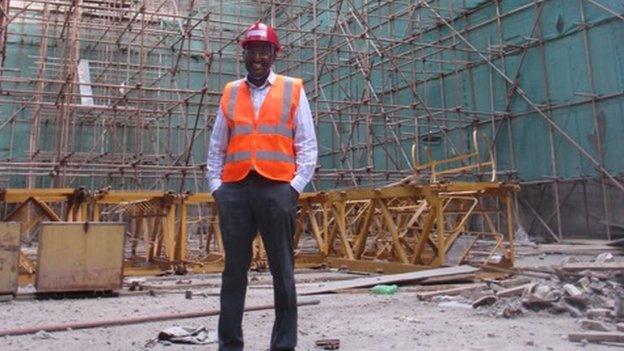
Samuel Alemayehu made his fortune in Silicon Valley
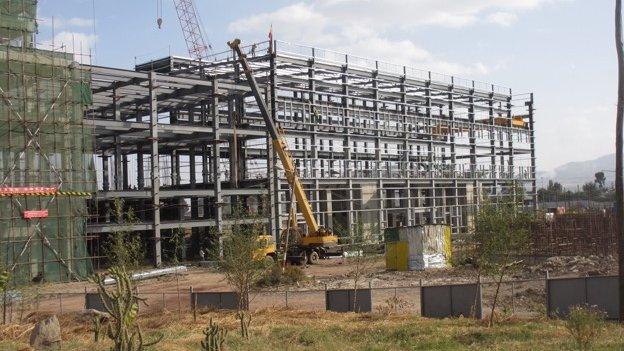
The waste-to-energy plant is being built right next to a rubbish mountain
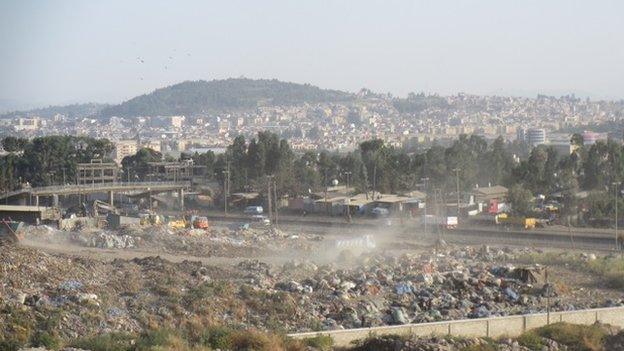
The rubbish mountain is 50 years old
Samuel says once the facility is operational, it will be able to supply power to more than 30% of Addis Ababa's households, no small feat in a city with a population of four million.
There is an urgent need to increase the power supply, which is currently failing to keep up with Ethiopia's rapid economic growth of more than 10% a year for the past decade.
The focus is on renewables. The most ambitious project is the Grand Ethiopian Renaissance Dam, external, which will be Africa's largest source of hydroelectric power.
The dam has generated much controversy because of the forced movement of people and because Egypt, which is downstream, is worried it will restrict vital water supplies.
Working conditions
After my tour of the energy facility, I visit another entrepreneur, Harsh Kothari.
Although he is Indian, Harsh is in some ways more Ethiopian than Samuel. His family has been in Ethiopia for four generations, he was born and educated in Addis Ababa, and speaks fluent Amharic.
"See that girl?" he says excitedly, as we drive past a child in her school uniform. "She is wearing my shoes."
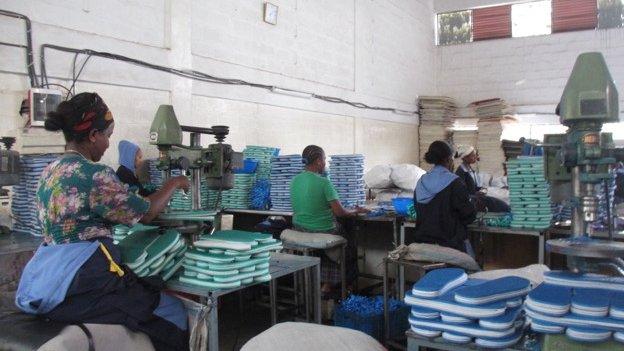
The shoe factory employs Ethiopians and Indians
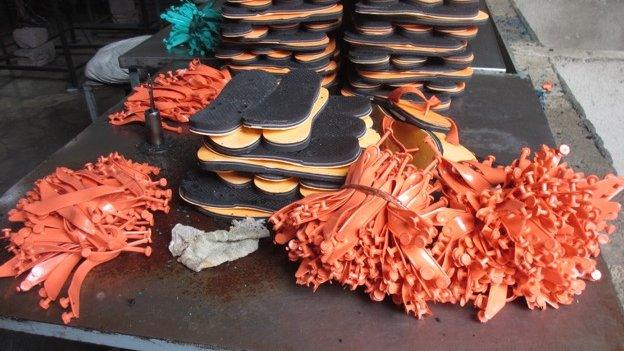
All the shoes have at least a portion of recycled material
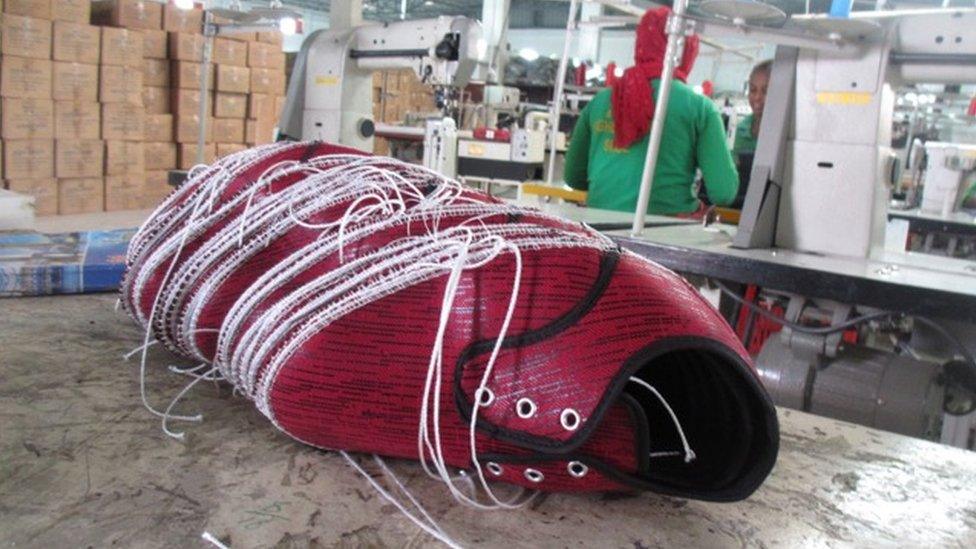
The factory makes 2,500 pairs of shoes per day on average
Again and again, we pass people wearing shoes made in Harsh's factory, from bright orange flip-flops to trainers made from local leather.
The shoe factory is magical. Barrels are piled high with pigments and chemicals. Whirring, hissing machines heat and mix the plastic. Workers cut, stitch, lace, check, bag and box the shoes.
My favourite place is the invention room, occupied by a solitary Indian wearing thick glasses. He is glueing strips of different coloured rubber together and playing about with strap widths to create unique flip-flop designs.
This locally managed factory is giving the Chinese shoe factories in Ethiopia a run for their money.
I'm told the Ethiopian workers in the Chinese factories are unhappy with the more rigid working conditions and the requirement that they sing not only the Chinese national anthem every morning but the factory anthem too.
Ambitious plans
It also fits in with Ethiopia's aim for manufacturing to lead the economy in 10 years' time.
Twelve giant industrial parks are being built as part of this plan, including the "green" clothing and textile complex known as Hawasa-Eco.
Prime Minister Hailemariam Desalegn pointed out to me the potential benefits to his country of rising labour costs in China: "More manufacturing can relocate from China to Ethiopia so it's an advantage in that sense."

Ethiopia's economy:
Witnessed rapid economic growth, with GDP growth averaging 10.9% between 2004 and 2014
World Bank says this has lifted the country from being the second poorest in the world in 2000 to becoming a middle income country by 2025, if current growth trajectory continues.
80% of population of about 90 million is dependent on agriculture
GDP for 2014 was $55.61bn
Ethiopia currently experiencing worst drought in 50 years, says Save the Children
Ethiopian electricity is among the cheapest in the world, if not the cheapest
Second five-year Growth and Transformation Plan will focus on manufacturing, agricultural transformation and development of the export sector

Back in central Addis, I visit a man who could easily pass for an Ethiopian, although his surname suggests otherwise. Vincent Diop is in fact half Senegalese, half Dutch.
"I grew up here. Ethiopia is in my blood. I feel at home here. I left Holland, where I had a thriving business, to set up a similar operation here, offering services to people through their mobile phones."
Vincent is keen to take advantage of the rapid growth in mobile phone use, which increased fourfold between 2011 and 2015.
According to Ethiopia's second five-year Growth and Transformation Plan (GTP2) 90% of the population will have mobile phones by 2020.
Young staff in white shirts and brightly coloured ties dart about the cluster of buildings that make up Vincent's business.
Those in yellow ties work for the mobile payment section, those with green ones for the Ethiopian equivalent of eBay, turquoise represents the jobs section, purple is legal advice and blue is for health.
Dynamism and creativity
Although their backgrounds are so different, Samuel, Harsh and Vincent represent the part of Ethiopian life where dynamism, creativity and an adventurous spirit are allowed to thrive.
The political space is far more restrictive. Human rights groups have recently condemned what they describe as the use of lethal force against those protesting against the expansion of Addis Ababa into land they see as rightfully theirs.
Opposition party members, journalists and bloggers are frequently jailed. Even the Ethiopian government looked a little sheepish when the ruling EPRDF party and its allies won every single seat in this year's parliamentary election.
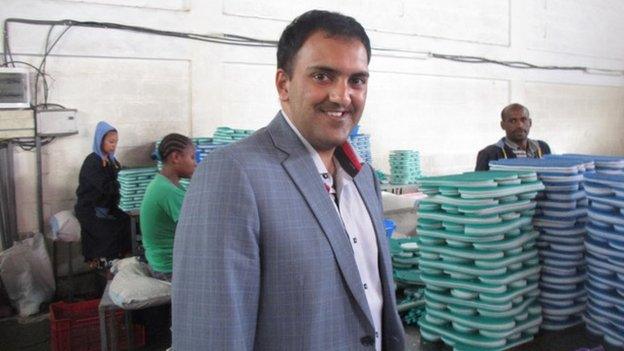
Harsh Kothari's shoe factory is thriving
The economy is also tightly controlled, especially the banking and telecoms sectors. But growth is impressive, GDP per head has risen by close to 150% in the past decade and the government has stated Ethiopia will become a middle-income country by 2025.
I asked one of the main architects of Ethiopia's economic transformation, the minister and special adviser to the prime minister, and author of the recent book Made in Africa: Industrial Policy in Ethiopia, Dr Arkebe Oqubay, whether the country's vision is a fantasy.
"I don't have any illusion that this will be achieved," he said.
"But it requires extraordinary effort to sustain such rapid growth and transformation."
Two African countries which have undergone serious conflict in the recent past and are now doing well in terms of economic growth and lower corruption rates are Ethiopia and Rwanda.
Is it a coincidence that both, especially Rwanda, are highly disciplined and place severe restrictions on political and media freedom?
- Published23 November 2015
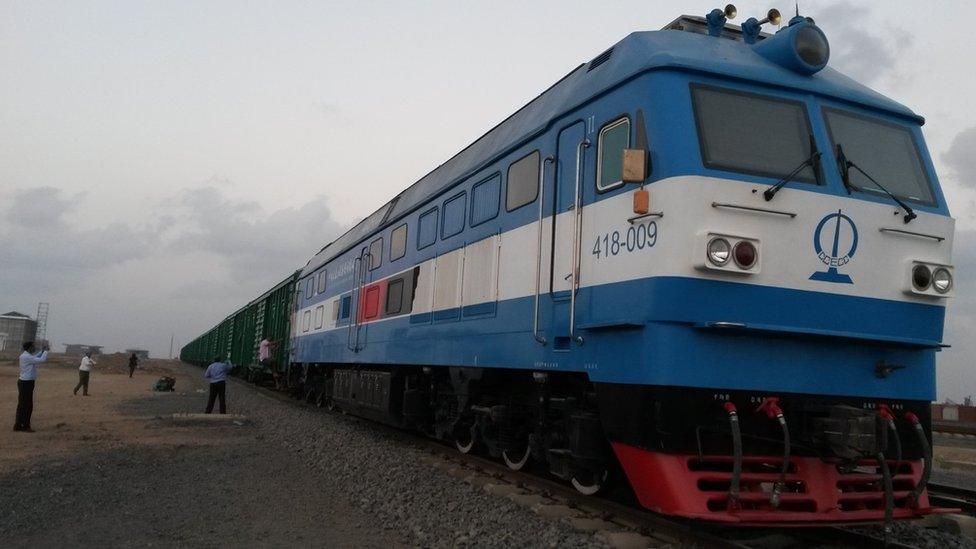
- Published22 March 2014
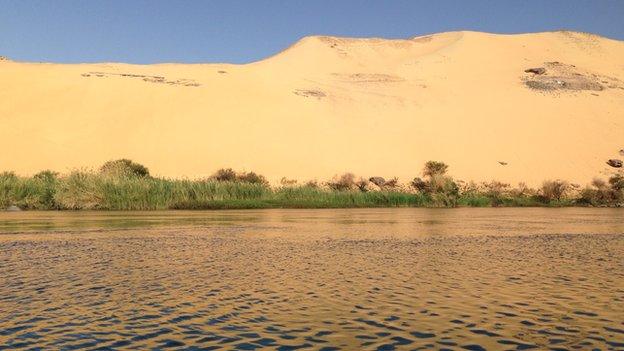
- Published26 June 2015
